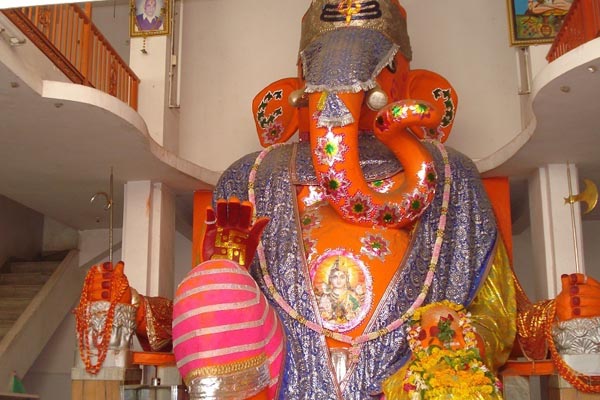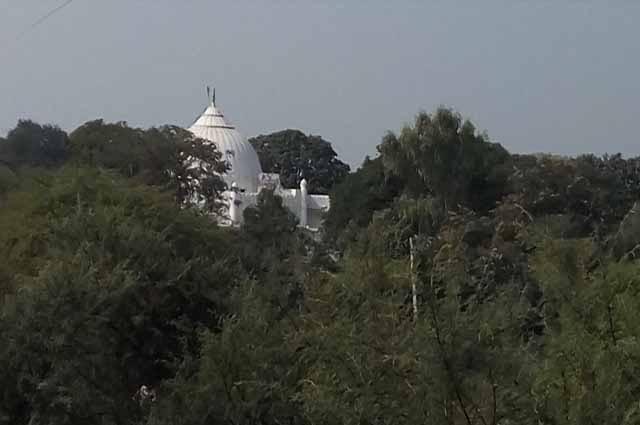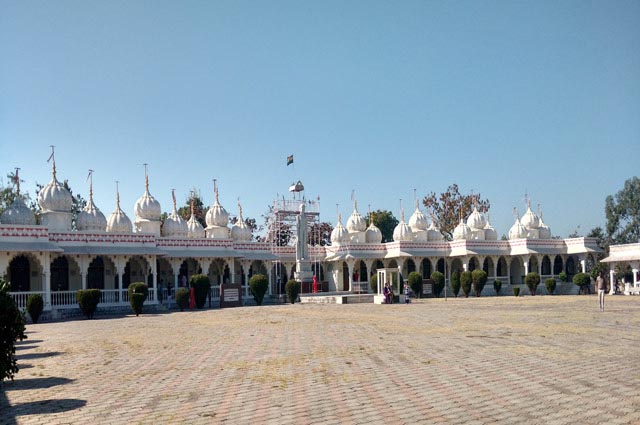Place of Interests in Indore
Search for Hotels in Madhya Pradesh
Places of Tourist Attraction in Indore
The Lalbagh Palace
The Lalbagh Palace of the Holkars on the banks of the Khan River is one of the grandest monuments the Holkar dynasty left to Indore city. A reflection of their taste, grandeur and life style, its construction began in 1886 under Tukoji Rao Holkar II, and was carried out in three phases, the final phase completed in 1921 under Tukoji Rao Holkar III. ndia. It is being developed by the GIt is a blend of the baroque and renaissance styles, and in its days was one of the most elegant residences in India. It is being developed by the Government of Madhya Pradesh as a cultural centre. The main attraction is the splendidly proportioned and furnished rooms, with frescoed ceilings and guilded ornamental mouldings.

The architecture and decoration of this palace, inhabited by the Holkars till 1978 reflect the highly westernized aesthetic sensibility of the later Holkars. Tukojirao III was the last incumbent of this magnificent palace. The whole complex has a total area of 28 acres and at one time had one of the best rose gardens of the country. Though simple to look from outside, the magnificent interior takes one into a dreamland of past glory. Lavishly decorated in the style of Varsailles Palace, its Italian marble columns, grand chandeliers, rich Persian carpets, flying nymphs on the ceiling, Belgium stained glass windows, Greek mythological reliefs, Italian style wall paintings, stuffed leopards and tigers are breathtaking. The ballroom has wooden floor on springs for extra bounce. The kitchen was built on the opposite bank of the river and was connected to the palace by a well lighted underground tunnel. The imposing gates of the palace are unique in Asia. A replica of the gates of Buckingham palace (London), about twice their size, were molded in cast iron and shipped from England. They carry the Holkar state emblem which means "He who tries will succeed".
Rajwada (Holkar Palace)
The Holkar Palace (Rajwada) is close to the Chhatris, in the main square in the heart of the city. It is a seven storied building (only facade remains) built over two centuries ago. This historic palace of the Holkars is built in a mixture of Maratha, Mughal and French style. The gopura-like monumental stone and wood structure, flanked by bastions and studded with balconies and windows, is a testimony of the past grandeur of the Holkars. Its lofty entrance archway above a huge wooden door encrusted with iron studs, leads into a vast courtyard enclosed by galleried rooms, and the arcaded Ganesh Hall where state and religious functions were once held.It is now used for art exhibitions and classical music concerts.

The lower three floors are made of stone and the upper floors are made of wood, which made it very vulnurable to destruction by fire. Rajwada was burnt three times in its history, and the last one in 1984 was the most devastating. The charred rubble of the rear portion has now given way to a symmetrically laid out garden featuring fountains, an artificial waterfall and some superb pieces of eleventh century sculpture.
The Krishnapura Chhatris
These are exquisite cenotaphs of the three later Holkar rulers. These memorials in stone are gracefully poised on the banks of the Khan River with their pyramidal spires tapering into soaring kalashas. These are memorials built on the cremation spots of the Holkar rulers of Indore. Facing west is the cenotaph built over the ashes of another woman ruler of Malwa, Maharani Krishnabai. The other two Chhatris are of Tukoji Rao II and Shivaji Rao, father and son, and are linked by a common oblong prayer hall with ornately carved arches and pillars on a high platform along the garbha grihas containing life size statues of these rulers. A breathtaking sight at night when illuminated, the Chhatris glow etherally against the dark of the sky. An artificial lake is created in this stretch of the otherwise dry Khan River, complete with a fountain, well laid gardens on both banks and boating facility.

Khajrana
Many citizens of Indore have a great faith in this Ganesh temple made by Ahilya Bai. They believe that praying here fulfils one's wishes. Nearby is the dargah of Nahar Sayed. It is believed that his headless body is buried here. This is an important pilgrimage place of Naita Muslims.

Annapurna Mandir
Inspired by the Meenakshi temple of Madurai, four life size elephants hold an ornately decorative gate in plaster. Inside the complex, apart from the main temple of Annapurna Devi are also temples of Shiva, Kal Bhairav, and Hanuman. There is also a pravachan hall. The outer wall of the main temple is decorated with colourful reliefs from mythological stories.

Bada Ganapati
Better known for its size than antiquity, this temple houses perhaps the largest Ganesh idol in the world, measuring 25 ft. from crown to foot. Created as a result of a dream to an Avantika (Ujjain) resident Shri Dadhich, it was built in 1875. The idol has a most interesting configuration of ingredients: bricks, lime stone, masala made of Gud, methi dana, soil collected from seven moksha puris: Ayodhya, Mathura, Maya, Kashi, Kanchi, Avantika, and Dwaraka, mud from stables of horse, elephant and cow, the powder of Pancharatna : heera, panna, moti, manek and pukhraj (diamond, emerald, pearl, ruby and topaz) and the holy water from all major places of pilgrimage. The metalic frame is of gold, silver, copper, brass and iron.

Jain Tirths near Indore
Shri Digamber Jain Atishaya Kshetra, Banediyaji
No of Temples : 02 and 05 altars, Pahaad/Mountain: No. Historical importance: It is about 800 years old kshetra. The main idol of Lord Ajinathji is very ancient miraculous and beautiful one. The Temples have hundreds of ancient idols. It is hearsay that the Temple is placed here from slay by Deities. The Temple has no foundation in ground. There is a big lake near Temple. Inner three altars are decorated by beautiful glass work. Annual Fair: On the full Moon day of Chaitra Sudi. Special Information: A huge Ajitnath gate is set up at Depalpur – Banediya junction by shri D. Jain Social Group, Indore and Trust. It provides all information to tourist.
| Location | Railway Station | Route |
| Depalpur, Indore, Madhya Pradesh 453115 | Goutampura road: 21km, Indore: 45km. | Indore Depalpur |

Bhagwan Bahubali Digamber Jain Atishay Tirth kshetra, Gommatgiri
No of Temples : Total 32, 24 Temples, 21 feet idiol of Bahubaliji, 3 Temples of Lord Aadinathji, 1 of Lord Mahaveerji, 1Ratnatriya Temple at mountain base etc. Pahaad/Mountain: Yes, 110 steps accessible by vehicals. Historical importance: This established by motivation of Aacharyashri Vidyasagarji. Panchkalyanaka took place in the year 1986 in presence of Aacharyashri Vidyanandiji, Aacharyashri Vimalsagarji and many eminent saints. The place is very beautiful with all modern amenities. Idols of Trikal Choubisi are of gems and one must see them. Annual Fair: Second Sunday of March. Special Information: Many Grand Temples are there in Indore which are must see.
| Location | Railway Station | Route |
| Hatod, Indore, Madhya Pradesh 453112 | Indore: 15km. | Indore (Rail and road) |
